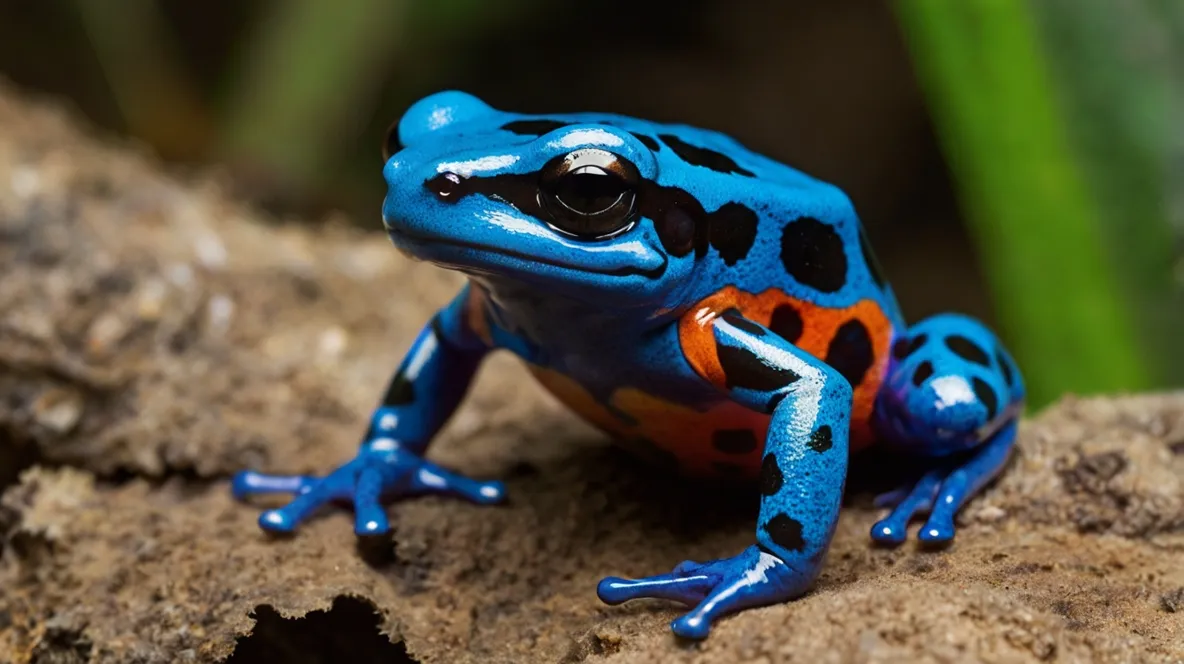Poison Dart Frog Interaction & Observation Guide
Observing and Interacting With Dart Frogs
Poison dart frogs are stunningly beautiful amphibians best enjoyed through observation. They are strictly **display animals** and should **NOT** be handled unless absolutely necessary for health reasons or relocation, and even then, only with appropriate precautions. Their skin is extremely delicate and permeable, making them vulnerable to toxins from our hands (soaps, lotions) and stress from handling.
WARNING: NO HANDLING RECOMMENDED. Handling dart frogs can severely stress them and damage their sensitive skin. Oils, salts, and residues on human skin can be harmful or fatal. Always wear powder-free nitrile gloves if emergency handling is unavoidable. Captive-bred dart frogs are typically non-toxic, but the ‘no handling’ rule remains crucial for the frog’s health.

Why Handling is Harmful
Understanding the risks reinforces the hands-off approach.
- Sensitive Skin: Amphibian skin is highly permeable, absorbing substances it contacts. Soaps, lotions, perfumes, and natural skin oils can be toxic.
- Stress: Handling is extremely stressful for these small, delicate frogs, potentially impacting their immune system and overall health.
- Physical Injury: They are small and fragile; improper handling can easily cause physical injury.
- Toxicity (Wild vs. Captive): While wild dart frogs gain toxicity from their diet, captive-bred frogs lack this toxicity. However, the primary reason for not handling is the frog’s delicate nature and susceptibility to skin damage and stress.
Appreciating Dart Frogs Through Observation
The best way to interact with dart frogs is by watching them in their environment.
- Vivarium Design: Create a complex, naturalistic vivarium. This provides enrichment for the frogs and fascinating viewing for you.
- Observe Natural Behaviors: Watch them foraging for food, climbing, calling (males), and interacting with their environment. Many species are diurnal (active during the day).
- Feeding Time: Enjoy watching them hunt small feeder insects like fruit flies or pinhead crickets.
- Photography: Document their beauty through photos or videos taken through the glass without disturbing them.
Limited Necessary Interaction
Interaction is primarily limited to essential care.

- Feeding: Introduce feeder insects into the enclosure carefully.
- Misting: Maintain humidity levels through regular misting, which the frogs may enjoy.
- Maintenance: Perform spot cleaning and necessary enclosure maintenance calmly and efficiently, minimizing disturbance.
- Emergency Handling (with Gloves): If you must catch a frog (e.g., vet visit), use powder-free nitrile gloves. Guide the frog gently into a transport container rather than grabbing it.
Recognizing Stress Signals (Even Without Handling)
Be aware of signs that the frogs might be stressed by their environment or nearby activity.
- Hiding Excessively: While normal hiding occurs, constant hiding might indicate stress.
- Lethargy or Lack of Appetite: Changes in normal activity or feeding can signal issues.
- Dull Coloration: While colors fluctuate, persistently dull colors can sometimes indicate stress or illness (consult expert resources).
- Frantic Behavior: Unusual frantic movements when you approach the tank might mean they feel insecure.
Hands-Off is Best: Poison dart frogs thrive when observed, not handled. Provide an excellent environment and enjoy their vibrant beauty and behavior from outside the vivarium for a rewarding keeping experience.